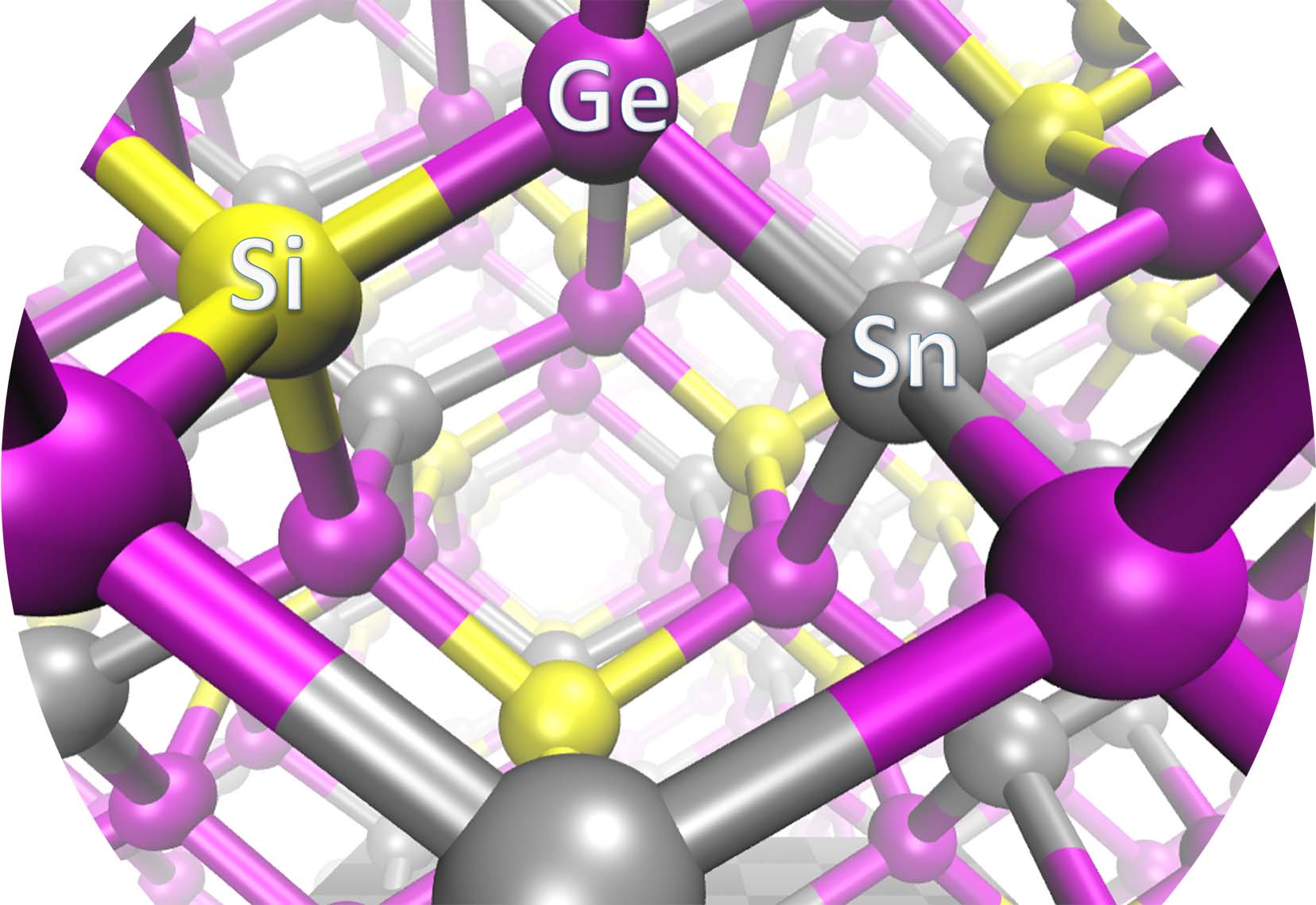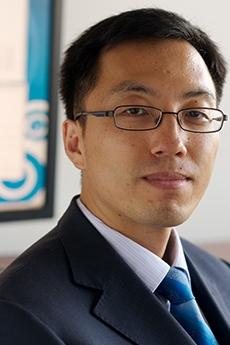George Washington University will partner with 9 other institutions to discover the fundamental scientific principles underlying the control of atomic ordering in semiconductor alloys, through a newly funded Energy Frontier Research Center (EFRC), titled “Manipulating of Atomic Ordering for Manufacturing Semiconductors (µ-ATOMs)”. The center receives $10.35 M over four years from the Department of Energy (DOE). GW will play the leading role in the theoretical investigation of the µ-ATOMs center. The core idea of the µ-ATOMs center is based on Dr. Li’s recent research finding of short-range order (SRO) in silicon-germanium-tin (Si-Ge-Sn) alloys.
Si and Ge are the backbone of modern electronics. When alloyed with Sn, Si and Ge can undergo a profound change in their electronic structures, projected to yield a wide spectrum of materials behaviors that span from conventional semiconductors to novel quantum materials. The conventional idea for implementing such radical change is to modify alloy composition. The µ-ATOMs center now proposes a new approach which is instead based on controlling the ordering of atoms in the alloys.
This new approach is inspired by Dr. Li’s recent research in examining the structure of Si-Ge-Sn alloys, which have been long conceived as random solid solutions where constituent elements are randomly placed in the underlying crystal lattice. Using the state-of-art computational modeling, Dr. Li’s team discovered that these alloys are not as random as previously considered, but instead, display a short-range order hidden beneath the nominal randomness. The remarkable finding is that the subtle change in atomic ordering can lead to significant changes in the underlying electronic structure that are sufficient to enable new functions and devices that are hard to achieve through conventional approaches.
The prediction generates excitement in the Si-Ge-Sn community. If proven feasible, the idea will expand the opportunity for a new low-cost, low-loss, reliable manufacturing microelectronics technology on a silicon platform. The pursuit of this idea requires a synergistic team effort that covers the full spectrum of materials research including materials theory, materials growth, characterization, and device prototyping. This is indeed how the multidisciplinary µ-ATOMs center forms, by including 10 institutions and 18 principal investigators, with expertise spanning from materials science, electrical engineering, metallurgy, and physics. The center is led by Prof. Fisher Yu from University of Arkansas, and includes Sandia National Lab, George Washington University, Dartmouth College, Stanford University, University of California, Berkeley, Rensselaer Polytechnic Institute, Arizona State University, University of Delaware, and University of Arkansas at Pine Bluff.
The role of GW in the µ-ATOMs center, which is a theory-driven investigation, is to lead the theory and modeling thrust, one of the four synergistic thrusts in the µ-ATOMs center. Dr. Li will receive $800 K to support his research team conducting theoretical investigation. With this grant, Dr. Li will have the opportunity to not only deepen the understanding of short-range order and its impact in the key semiconductor alloys, but also work closely with experts in other domains to transform the knowledge to enable scaled-up, reliable, and cost-effective sequence of operations for manufacturing semiconductor structures and devices from the bottom-up.
The mission of µ-ATOMs is to “discover the underlying science principles determining the ordering of atoms in semiconductor alloys, enabling a breakthrough in the synthesis for semiconductor properties and structures”. This goal is aligned with the national priority of semiconductors.
EFRC is a high-profile research center funded by DOE/BES. For more information regard EFRC, please see https://science.osti.gov/bes/efrc



